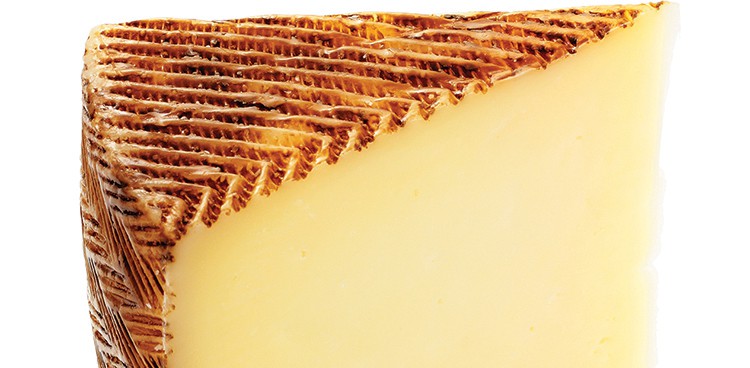
A Matter of Taste is featured in our 2017 Cheese+ issue
Aromas we detect while sniffing or chewing result from an infinitely varying mix of chemical compounds. Specifically these are “volatile” compounds: substances that can vaporize and float through the air to reach olfactory receptors in our nasal cavities.
In cheese, volatile aroma compounds result from enzymes that break down milk’s basic components—fat, protein, and carbohydrates. While an aged wheel might contain hundreds of these compounds, none are unique to cheese; they’re found elsewhere in nature, too. That’s why there’s not a true “cheese” smell—and why curds so often yield scents that remind us of other foods, such as fruit, meat, or nuts. When we look for the source of cheese’s “nutty” flavors, we’re really seeking specific chemicals, or combinations of chemicals, that remind us of nuts.
That’s exactly what researchers at North Carolina State University did in a groundbreaking 2004 experiment. First pro tasters distinguished between aged cheddars with and without nutty aromas. Then the team isolated volatile aroma compounds from those cheeses. Nutty and non-nutty cheeses displayed an important difference: Nutty varieties had higher concentrations of compounds known as Strecker aldehydes. Curious, the scientists added extra Strecker aldehydes to cheddars—and tasters perceived those cheeses as even nuttier. Connecting the sensory perception of nutty flavors to the presence of precise chemical compounds was a major step forward in flavor science—but Strecker aldehydes are likely just one nutty culprit among many.
“Defining the cause of nutty flavor in cheese has been difficult,” says John Lucey, director of the Center for Dairy Research at the University of Wisconsin-Madison. “There are more questions than answers. For other cheeses there are likely other causes—organic acids and a very wide range of chemical compounds.”
Just as there’s no single “cheese” aroma, there’s no one “nut” aroma, either. That’s why the nut industry has also examined ways to characterize flavor. In 2006 the Almond Board of California worked with professional tasters to release a lexicon that included a list of 36 aromas commonly detected in almonds. Since nuts (like cheeses) are packed with flavor compounds, and dozens of almond strains grow in California alone, the reference helps researchers, producers, and retailers communicate when comparing varieties and cooking methods. Similar guides developed for peanuts and cashews display the incredible variety of aromas that are found in nuts, from cod liver oil to fried chicken to—yes—cheese, proving just how dizzying flavor science can be.
Feature Photo Credit: Carlos Romero/Shutterstock.com



